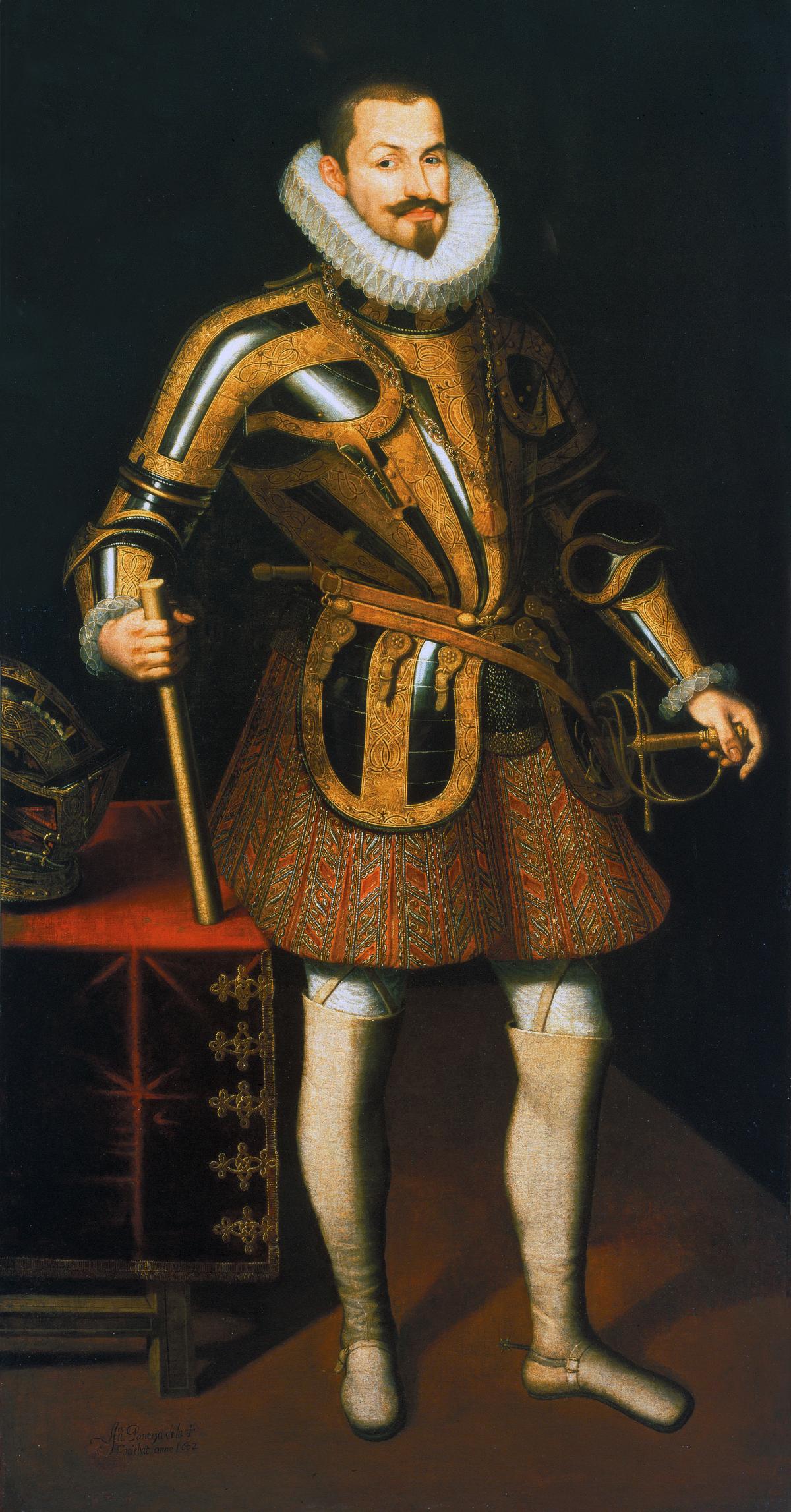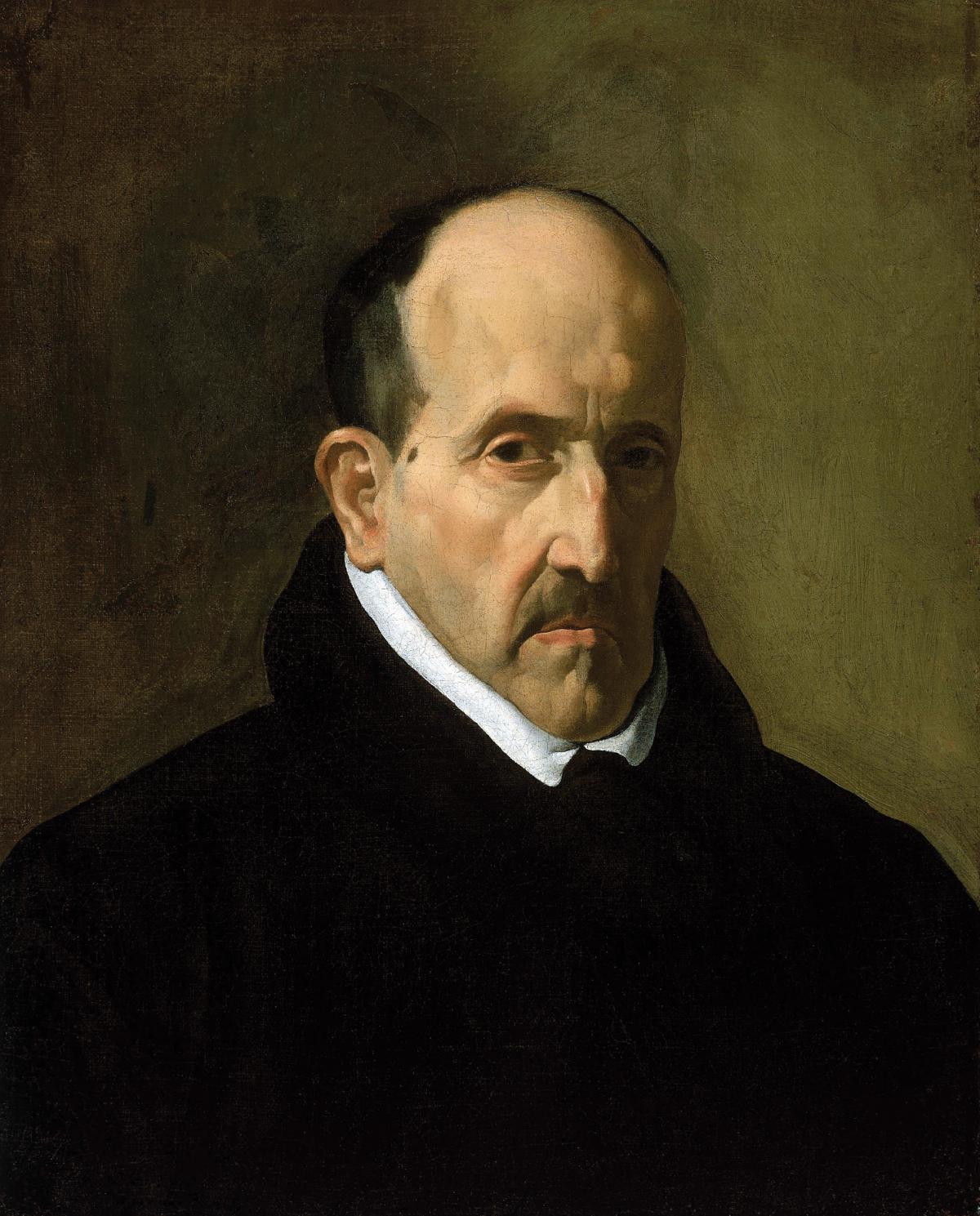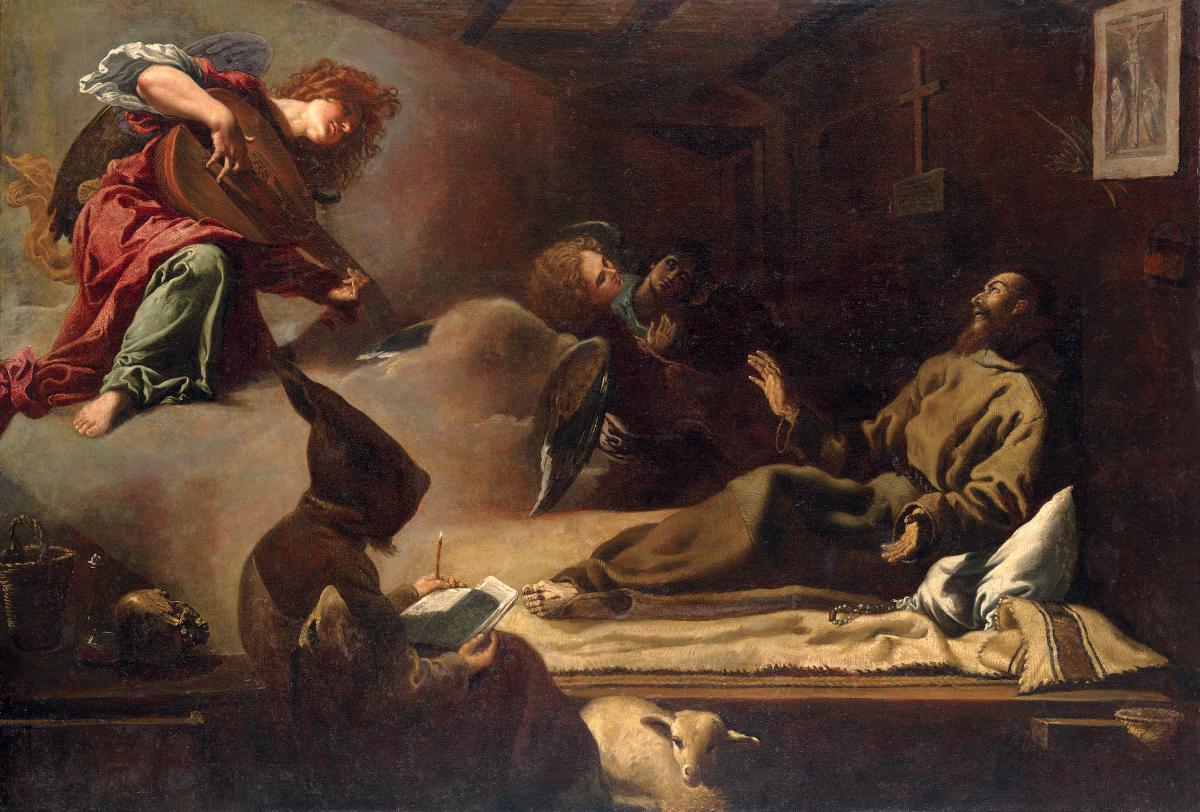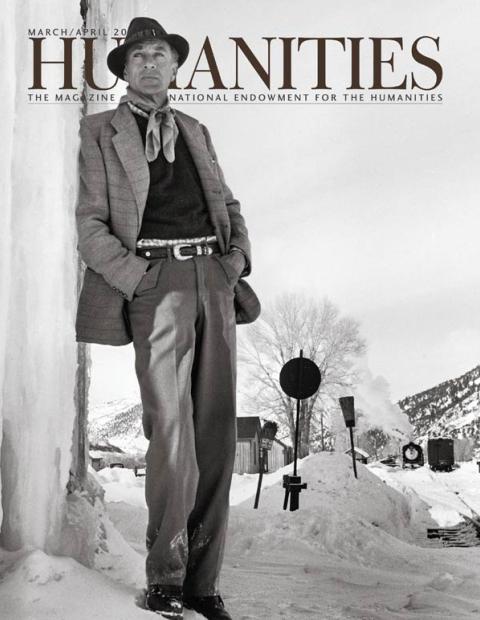Don Francisco Gómez de Sandoval y Rojas, better known as the Duke of Lerma, is not a familiar name to those interested in the annals of power and politics. The Duke of Lerma, the favorite (El Favorito o Valido) and unofficial prime minister of Philip III of Spain from 1598 to 1618, was, however, in his own time, both in Spain and throughout Europe, quite famous. And infamous. He was respected, feared, attacked, satirized, gossiped about, eulogized, and even dramatized in plays such as The Great Favourite or the Duke of Lerma, written in 1668 by the English playwright Sir Robert Howard.
A major patron of the arts (his patronage is reflected in “El Greco to Velazquez: Art During the Reign of Philip III” this spring at the Museum of Fine Arts in Boston and this fall at the Nasher Museum at Duke University) as well as a major political figure, Lerma transformed the way politics, power, and art merged. Although he did not have a brilliant political mind, his strategies for attaining, conserving, and exercising power were imitated by many of his most famous contemporaries: the Duke of Buckingham in England, Cardinal Richelieu in France, and the Count Duke of Olivares in Spain.
During his ascendancy, the government implemented a series of measures aimed at consolidating the power of the king, reforming the institutional machinery, and confronting the disastrous financial situation that Philip III had inherited from his father. Like many of his contemporaries, Lerma realized that the monarchy was financially exhausted after decades of international war and, consequently, unable to maintain its role as Europe’s policeman. He encouraged the prudent adoption of a pacifist international outlook, which translated into the consolidation of peace with France in 1598, a peace treaty with England in 1604, and a twelve-year truce with the Dutch Republic in 1609. Notably, Lerma is associated with the most notorious policy of his time: the expulsion from the Iberian peninsula of approximately 300,000 Moriscos, the Spanish population of Arab descent, between 1609 and 1614.
The other major point of biographical interest is that Lerma changed the way royal favorites were viewed. And his example continues to shed light on the debate over who truly rules—the monarch or the one who has his ear.
In 1528, the famous sixteenth-century Italian writer and diplomat Baldassare Castiglione published a book that became an immediate best seller and an enduring political text, Il cortegiano (The Courtier). Castiglione’s book concerns many topics, but his main goal was to help courtiers be effective inside increasingly sophisticated royal courts. Early European political power was won and maintained by arms. Monarchs constantly needed to defend their dynastic rights and to control armed factions that opposed their rule.
In the new monarchies of the Renaissance, however, power and influence could be obtained by becoming—to use an Italian saying of the time—“patrone della orecchia del re” (patron of the king’s ear). In order to exploit such power, courtiers needed all the virtues and qualities discussed in Castiglione’s book. These included excellent lineage, external beauty, good appearance and manners, education, and so on. With these weapons at his disposal, the new courtier was ready to devote himself entirely to the service of his king.
A perfect courtier, Castiglione wrote, should “love and adore the prince he serves over all humans, using all his will, virtues and arts to please his master.” But all his qualities and loyalty were for nothing if the courtier was not able “to gain the love of his prince” and by doing so “to become his favorite” and main adviser.
Lerma was a masterful practitioner of Castiglione’s teachings. Born in the 1550s, Don Francisco Gómez de Sandoval y Rojas belonged to a family that from the fifteenth century had occupied a low place in the hierarchy of nobles. During the reigns of Charles V (who reigned from 1516 to 1556) and Philip II (1556 to 1598), the Sandoval family attempted to get as close as possible to the reigning monarchs by filling various offices in the royal household. As reward, they hoped for substantial properties to compensate them for lands lost several generations back. Their success was very limited. By the 1570s, Lerma, the family’s main heir, possessed one house and estate, a great deal of debt, and little influence.
The opportunity to change his status came in the 1580s when Prince Philip, the future Philip III, began to assert his role in court politics. From this time on, Don Francisco de Rojas perfectly understood what to do to gain the favor and love of his young master: “visit, serve, suffer, make himself visible, and persevere,” as the Spanish humanist Antonio de Guevara wrote in 1539. The same writer urged would-be courtiers “to find out the prince’s inclinations. A courtier needs to know if the prince likes music, hunting, fishing, and the style of his riding, and once he discovers the prince’s preferences he himself must love what the prince loves and follow what the prince follows.” These shared preferences are vitally important, Guevara insisted, because princes are human and “sometimes love more those courtiers who share their own preferences than those who labor hard on their behalf.” Guevara’s advice left no room for misunderstanding: “Wise Castilians should keep in mind the following principle: everything the king likes should be considered good, while everything he dislikes should be considered bad.”
Lerma pursued this strategy with numerous gifts and unending adulation, often relying on assistance from key servants of Prince Philip. Despite attempts by other courtiers to thwart his advances, Lerma demonstrated a remarkable ability to overcome obstruction and a facility for arranging secret communication with the prince and finding ways to place himself in his presence. The success of Lerma’s strategy became clear as soon as Philip III inherited the crown in 1598, and publicly named Lerma his most trusted counselor and favorite.
Lerma thus became the first of the so-called “great favorites” who, during the seventeenth century, dominated the political scenes in Spain, France, England, and the Dutch Republic. He was the de facto prime minister of Philip III of Spain, and he retained his prestige until October 1618, an astonishingly long period compared with the tenure enjoyed by previous favorites. Only a few figures of influence—the Count Duke of Olivares in Spain (the royal favorite between 1621 and 1643) and Cardinal Richelieu in France (Louis XIII’s favorite between 1623 and 1640)—matched Lerma’s endurance.
But in order to transform the king’s favor into power, influence, and wealth, Lerma and his allies had to challenge contemporary perceptions of royal favorites. Writers like Castiglione viewed favorites as beneficial to the entire court. Others felt they were dangerous to both the monarch and the community at large.
According to this line of thought, the requisite of peace and stability was a strong monarch who ruled by himself. Strong monarchs were, or should be, natural leaders who were not reluctant, indeed were determined, to be in full control of the decision-making process. They consulted, perhaps, with their loyal advisers, but always took control of their own destiny and that of their subjects. Famously, Niccolò Machiavelli insisted that strong and durable states could only be created by strong masters. “It is an infallible rule,” he wrote in The Prince, “that a prince who is not himself wise cannot be soundly advised unless he happens to put himself in the hands of a man who is very able and controls everything. Then he could certainly be well advised, but he would not last long because such a governor would soon deprive him of his state.”
Machiavelli understood politics as a zero-sum game and the political world as a dramatic, sometimes tragic, combination of conspiracy and violent confrontation. The king who had a favorite would thus give the impression that he was not fully in control, a situation that could only result in the fall, sometimes the death, of the king or his favorite, or of both of them. The sixteenth-century English playwright Christopher Marlowe displayed complete understanding of the Machiavellian political perspective in his vigorous and tragic drama Edward II, written in the same decade in which Lerma rose to power.
Many other sixteenth-century political commentators—the French Jean Bodin, the Flemish Justus Lipsius, and the Spanish Juan de Mariana, among others—emphasized the dangers posed by a royal favorite, the “king’s shadow” as he was referred to at the time. According to these authors, the king’s subjects would never accept a monarch who depended on a single counselor. The very logic of monarchy forbade such favoritism. “For as the supreme God,” wrote Bodin, “cannot make another God equal to himself . . . so we may also say that the prince, who is for us God’s image, cannot make a subject equal to himself.”
Then, as now, the goal of public office was service to the well-being of the community. From this perspective, a majority of political commentators believed that participation in decision-making should be reserved for those with clearly defined official roles. Public officials—even the monarch himself—should have a clear set of political and moral responsibilities as well as limits to their authority. Anyone with informal power would be uncontrollable, politically unaccountable, and therefore dangerous. Worse, given their closeness to the king, royal favorites might very well convince the king that his power to decide matters of state and his power over his subjects were unlimited. Royal favorites, it was feared, would persuade the king, as Juan de Mariana wrote, that “royal power is greater than the laws and the community, that the king is the owner of his subjects’ property, and that everything, including the law, depends only on the monarch’s will.”
From the beginning, Lerma and his allies attempted to counter these anxious criticisms. They insisted that a royal favorite would benefit both the monarch and the community. Lerma became a new kind of favorite and inaugurated a new type of favoritism. Though he, like previous favorites, owed his preeminence to the king’s personal favor, Lerma was careful to present himself as a “public official.”
Lerma justified his role and his power as an opportunity to remedy a political system showing signs of institutional and political sclerosis. Spain’s acquisition of new territories and the increasing confrontations with other European powers meant that the monarch had many more responsibilities than he could possibly attend to. Lerma was not alone in claiming that a man in the king’s confidence, a favorite, could help his master manage public affairs, serve as the king’s representative to other institutions and to the various kingdoms, and protect the monarch from his subjects’ inevitable complaints.
All of the evidence indicates that Lerma and his successors played a truly political role, and that—contrary to Machiavelli’s predictions—they did not try to weaken or usurp the king’s powers. Few explained better than the French monarch Louis XIV the complexities associated with the role of a favorite as de facto prime minister. In his Memoirs, the king confirmed the old view of the favorite as a threat to the king’s ability and capacity to rule. “As to the persons who were to support me in my work,” he wrote, “I resolved above all not to have a prime minister, and if my successors take my advice, my son, the name will forever be abolished in France, there being nothing more shameful than to see on the one hand all the functions and on the other the mere title of king.”
Elsewhere, however, Louis XIV took a stance similar to the one defended by Lerma and his associates: “If he [the prime minister] despoils you of part of your glory,” at the same time “he unburdens you of your thorniest cares. The interest of his own greatness engages him to sustain yours. He wishes to preserve your rights as a possession that he enjoys in your name, and if he shares your diadem with you, he at least works to leave it intact to your descendants.”
Royal favorites in general, and Lerma in particular, did indeed “share” the royal diadem, or crown, with their masters by becoming actors in the mise-en-scène of the monarchy, guiding the royal and courtly ceremonials, and playing a pivotal part in the celebration and promotion of the arts. Before Lerma, other than royalty, there were few significant art collectors, and few enjoyed prominence in the royal ceremonies that took place at court and in a nation’s capital cities. During the reign of Philip II, royal ceremonials lacked splendor or continuity. Philip II held no regard for the power of ceremonies and public representation, displays which he viewed as inconsequential. Philip III was a more public king. During the first fifteen years of his reign, there were more masques, royal entries, and public ceremonies celebrating the king and the monarchy than in the entire forty-two years of Philip II’s reign.
The presentation of the king as a commanding and sacred personage, the epitome of royal power, consumed the energies of Philip III’s intimate servants from the beginning of his reign, and especially the energies of Lerma, who became a kind of modern “minister of culture.” According to one of his contemporaries, Lerma inaugurated “a new style of grandeur" by employing art, pomp, and pageantry to display his own power and position. At the same time, he did not fail to emphasize the power of his master and the importance of the monarchical system.
Lerma inaugurated a historical trend in Europe that resulted in the transformation of the favorite into a prominent cultural and artistic patron. He became the most important artistic patron of his time, surpassing all others at the Spanish court, including the king himself. Lerma undertook an immense program of palace-building, both for his own family and for the king. His activities were by no means limited to art and architecture; he also became an important patron of letters and the most important patron of the theater during the first decades of the seventeenth century.
More important still, following the example set by Spanish and other European monarchs, Lerma collected approximately fifteen hundred paintings between 1599 and 1611, making his collection one of the largest ever assembled. It also made Lerma the first ever nonroyal art collector of note in early modern Europe. Many of the paintings, sculptures, and objects of art he collected or commissioned he donated to the royal collections, to convents, and to churches throughout Spain.
Lerma’s tenure as prime minister was not without problems or free of critics. He and some of his most prominent allies (“los favoritos del favorito” or the “favorite’s favorites,” as they were known), men like Alonso Ramírez de Prado, Pedro Franqueza, and Rodrigo Calderón, were accused of corruption, of using their power and offices to enrich themselves, their relatives, and their associates. Lerma and his associates were also criticized for their failure to solve the financial and economic crisis of the monarchy: In 1607, Philip III declared the monarchy bankrupt. Furthermore, between 1598 and 1618, despite the cessation of major international conflict, the public debt doubled. Lerma’s critics attacked his pacifist stance, claiming that Spain had been weakened and was now an easy target for its many enemies.
More damaging still, Lerma was accused of usurping the king’s power and authority, of subverting public authority and using it as a tool to serve himself, his relatives, and his allies. In October 1618, the mounting criticism resulted in his fall from power and his expulsion from the court. After 1621, Lerma, who had risen to such distinction that in 1618 he’d been appointed a cardinal, had to endure a steady campaign of denigration as well as the loss of all the rents, possessions, and many of the titles he had received during the reign of Philip III. On May 17, 1625, he died in his house in Valladolid, impoverished and vilified, accused by some of his contemporaries and modern historians of initiating Spain’s decline.








